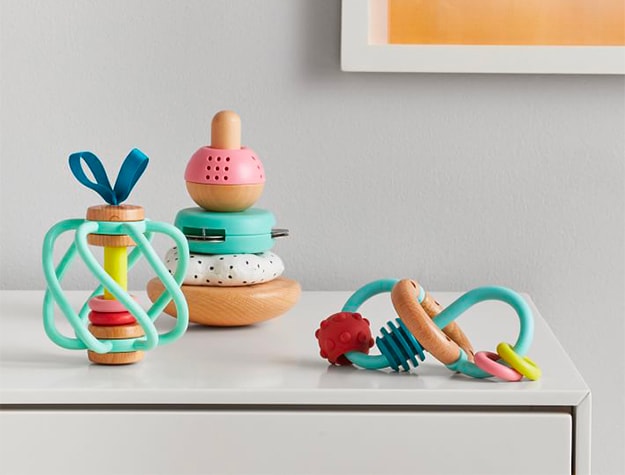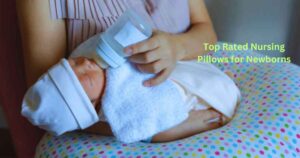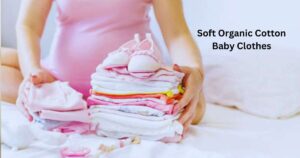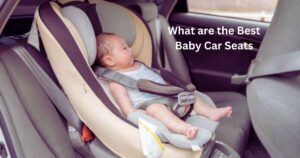How to clean baby toys that can’t be washed, use disinfectant wipes or a cloth with mild soapy water. Ensure the toys are thoroughly dried.
Keeping baby toys clean is essential for your child’s health. Germs and bacteria can easily accumulate on toys, leading to potential illnesses. Regular cleaning helps maintain hygiene and prolongs the lifespan of the toys. For non-washable toys, disinfectant wipes or a mild soapy solution can be effective.
Always check the toy’s material and manufacturer’s guidelines before cleaning. Avoid harsh chemicals that might be harmful. Dry the toys completely to prevent mold growth. Maintaining a clean play environment ensures your baby can enjoy their toys safely and healthily. Regular cleaning routines can make this task simple and manageable.
Types Of Non-washable Baby Toys
Parents often face challenges in cleaning baby toys that can’t be washed. Some toys need special attention to ensure they remain safe and clean. Let’s explore the different types of non-washable baby toys.
Plush Toys
Plush toys are often a child’s favorite. They are soft and cuddly but can harbor germs. Here are some ways to clean them:
- Use a vacuum with a brush attachment to remove dust.
- Spot clean with a damp cloth and mild soap.
- Use a steam cleaner to sanitize the surface.
Electronic Toys
Electronic toys often have batteries or electrical components. These toys can’t get wet. Cleaning them requires special care:
- Turn off the toy and remove any batteries.
- Wipe the surface with a soft, damp cloth.
- Use a cotton swab for small crevices.
- Sanitize buttons and touch surfaces with alcohol wipes.
Wooden Toys
Wooden toys are durable and natural, but they can absorb water. Cleaning them properly ensures they stay in good condition:
- Dust the toys with a dry cloth.
- Wipe down with a damp cloth and mild soap.
- Dry immediately with a soft towel.
- Use a mixture of vinegar and water to disinfect.
Remember, keeping baby toys clean is essential for your child’s health. Always follow the best methods for each type of toy.
Assessing Toy Materials
Cleaning baby toys that can’t be washed can be tricky. Different materials need different cleaning methods. Let’s break it down by material type.
Fabric And Plush
Fabric and plush toys can collect dust and germs. Spot cleaning with a damp cloth works well. Use a mild soap if needed.
- Check the toy label for cleaning instructions.
- Use a vacuum with a brush attachment to remove dust.
- For stains, use a cloth with warm water and mild soap.
Let the toy air dry completely before giving it back to your child.
Hard Surfaces
Hard surface toys like plastic or wood need different care. Use a disinfectant wipe for these.
- Wipe down the toy with a disinfectant wipe.
- Use a cloth with warm water to remove residue.
- Dry the toy thoroughly with a clean towel.
Make sure the toy is fully dry to avoid mold growth.
Sensitive Components
Toys with sensitive parts need special attention. These could be electronic parts or small moving pieces.
- Remove any batteries before cleaning.
- Use a cotton swab dipped in alcohol to clean small parts.
- Gently wipe the toy with a damp cloth.
- Dry the toy with a soft, dry cloth.
Reinsert batteries only after the toy is completely dry.
Using Safe Cleaning Products
Keeping your baby’s toys clean is essential for their health. Some toys can’t be washed in a machine. You need to use safe cleaning products. These products should be non-toxic and gentle. Below, we explore three effective methods.
Non-toxic Wipes
Non-toxic wipes are perfect for cleaning baby toys. They are easy to use and safe. Look for wipes that are free from harsh chemicals. Most stores sell baby-safe wipes.
Here’s how to use non-toxic wipes:
- Take a wipe from the package.
- Gently wipe the toy’s surface.
- Allow the toy to air dry.
Vinegar Solutions
Vinegar is a natural cleaner. It is safe and effective. You can make a vinegar solution at home. Mix equal parts of water and white vinegar.
Follow these steps to clean toys with vinegar:
- Mix water and vinegar in a spray bottle.
- Spray the solution on the toy.
- Wipe with a clean cloth.
- Let the toy dry completely.
Baking Soda Mixtures
Baking soda is another safe cleaning option. It can remove stains and odors. You need to make a paste with baking soda and water.
Here’s how to clean with baking soda:
- Mix baking soda and water to form a paste.
- Apply the paste to the toy.
- Scrub gently with a brush.
- Rinse the toy with a damp cloth.
- Dry the toy thoroughly.
These methods ensure your baby’s toys are clean and safe. Always use gentle, non-toxic products for cleaning.

Credit: momlovesbest.com
Spot Cleaning Techniques
Cleaning baby toys that can’t be washed might seem tricky. But spot cleaning techniques can help keep them fresh and hygienic. Here are some effective methods to clean toys without water.
Surface Wiping
Surface wiping is a quick way to clean toys. Use a soft cloth or a disposable wipe. Make sure the cloth is slightly damp, not wet. You can use a mild soap solution for better results.
- Take a soft cloth
- Dampen it with mild soapy water
- Gently wipe the toy’s surface
- Dry with a clean cloth
Stain Removal
Sometimes, toys get stubborn stains. You can remove these with simple household items. Baking soda paste and vinegar work wonders.
| Stain Type | Cleaning Solution |
|---|---|
| Food Stains | Baking soda paste |
| Ink Stains | White vinegar |
- Apply the solution to the stain
- Let it sit for a few minutes
- Wipe with a clean, damp cloth
- Dry thoroughly
Deodorizing
Toys can develop bad odors over time. Deodorizing them is easy and keeps them smelling fresh.
Use baking soda for effective deodorizing. Sprinkle a small amount on the toy. Let it sit for a few hours, then wipe it off.
- Sprinkle baking soda on the toy
- Wait for a few hours
- Wipe it off with a dry cloth
These spot cleaning techniques are simple and effective. Keep your baby’s toys clean and fresh with minimal effort.
Disinfecting Without Water
Cleaning baby toys without water can seem tricky. Some toys can’t be washed with soap and water. But there are safe and effective ways to disinfect these toys. Below are some methods to keep your baby’s toys germ-free.
Uv Light Sanitizers
UV light sanitizers are a great option. They use ultraviolet light to kill germs. Place the toy inside the UV light box. Turn on the device and wait for the recommended time. UV light reaches all surfaces and crevices. It’s quick, easy, and chemical-free.
Disinfectant Sprays
Disinfectant sprays can be used on many toys. Spray the disinfectant on the toy’s surface. Let it air dry completely before giving it back to your baby. Make sure the spray is safe for children’s toys. Read the label to confirm this.
Alcohol Wipes
Alcohol wipes are another great option. Use them to wipe down toys that can’t be washed. Alcohol wipes kill germs and dry quickly. Make sure the wipes contain at least 70% alcohol. Wipe all surfaces of the toy thoroughly.
| Method | Pros | Cons |
|---|---|---|
| UV Light Sanitizers | Chemical-free, quick | Needs a UV device |
| Disinfectant Sprays | Easy to use | Must ensure safety for children |
| Alcohol Wipes | Effective, quick-drying | May not be suitable for all materials |
Handling Electronic Toys
Electronic toys bring joy to children but cleaning them can be tricky. They can’t be submerged in water or thrown into the washing machine. Here are some tips to ensure your baby’s electronic toys are clean and safe.
Battery Safety
Always remove batteries before cleaning electronic toys. This prevents any electrical hazards. Use a soft cloth dipped in a mix of water and mild soap. Wipe down the toy gently. Avoid getting moisture into battery compartments.
| Step | Action |
|---|---|
| 1 | Remove batteries |
| 2 | Use a soft cloth |
| 3 | Mix water and mild soap |
| 4 | Wipe down toy |
Circuit Protection
Protecting the circuit board is crucial. Never expose it to water. Use a dry cloth to dust off the toy. For sticky spots, a slightly damp cloth works. Ensure the cloth is not too wet.
- Dust with a dry cloth
- Use a slightly damp cloth for sticky spots
- Ensure no water gets into the toy
Screen Cleaning
Electronic toys often have screens. Use a microfiber cloth to clean screens. Avoid harsh chemicals. They can damage the screen. Use a damp cloth for stubborn spots. Dry the screen with a clean cloth.
- Use a microfiber cloth
- Avoid harsh chemicals
- For stubborn spots, use a damp cloth
- Dry the screen with a clean cloth
Maintaining Wooden Toys
Wooden toys are timeless and durable. They require special care to keep them safe for your child. Here are simple steps to maintain their quality.
Dusting And Polishing
Regular dusting helps keep wooden toys clean. Use a soft cloth to wipe away dust. Avoid using water as it can damage the wood.
For a deeper clean, polish the toys. Mix a small amount of mild soap with water. Dip a cloth in the solution and wring it out well. Gently wipe the toy, then dry it with a clean cloth.
Preventing Splinters
Wooden toys can develop splinters over time. Check the toys frequently for rough spots. Sand any rough areas with fine-grit sandpaper. Always work in the direction of the grain.
Regular sanding keeps the toys smooth and safe for play. After sanding, wipe the toy with a dry cloth to remove any dust.
Natural Oils
Applying natural oils protects wooden toys. Olive oil, coconut oil, or beeswax work well.
- Choose your oil.
- Apply a small amount to a cloth.
- Rub the cloth over the toy, covering all surfaces.
- Let the oil soak in for a few hours.
- Wipe off any excess oil with a clean cloth.
This process keeps the wood hydrated and prevents cracking.
| Natural Oils | Benefits |
|---|---|
| Olive Oil | Easy to find, non-toxic |
| Coconut Oil | Smells nice, antibacterial |
| Beeswax | Long-lasting, creates a protective layer |
Choose an oil that suits your needs and preferences.
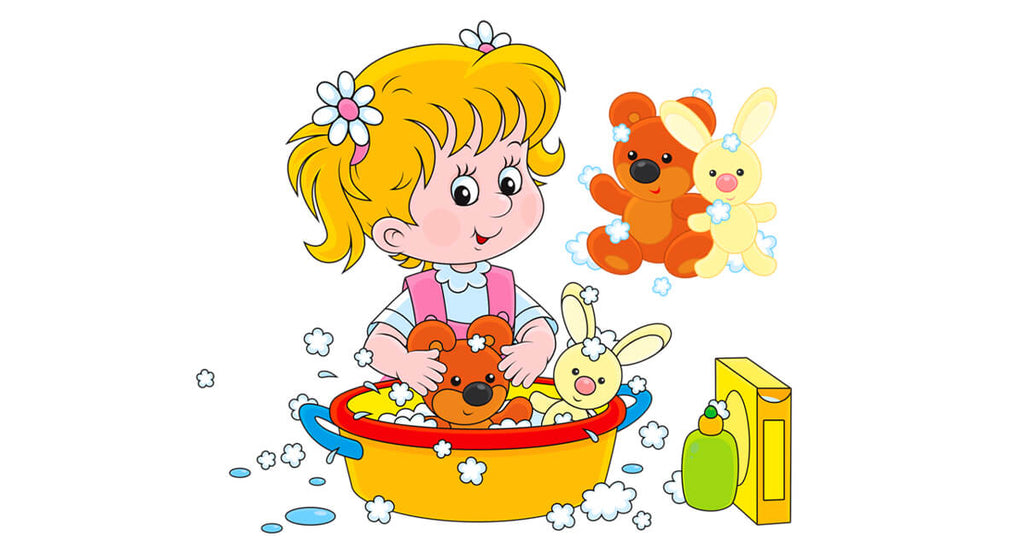
Credit: xwinde.com
Regular Cleaning Schedule
Maintaining a regular cleaning schedule for baby toys that can’t be washed is crucial. It ensures these toys remain safe and hygienic for your little one. A consistent routine helps minimize the risk of germs and bacteria.
Frequency
How often should you clean these toys? Aim to clean them at least once a week. If the toy is used frequently, consider cleaning it more often. Always clean toys immediately if they become visibly dirty.
Routine Checks
Perform regular checks on your baby’s toys. Look for signs of wear and tear. Broken toys can harbor germs and pose safety risks. Replace any damaged toys promptly.
Storage Tips
Proper storage of baby toys is essential. Keep them in a clean, dry place. Use storage bins or baskets that allow for air circulation. Avoid storing toys in damp areas to prevent mold growth.
| Task | Frequency |
|---|---|
| General Cleaning | Weekly |
| Check for Damage | Monthly |
| Proper Storage | Always |
- Weekly Cleaning: Use a damp cloth with mild soap.
- Monthly Checks: Inspect for any damage or wear.
- Proper Storage: Ensure toys are dry before storing.
- Wipe toys with a damp cloth.
- Inspect toys for any damage.
- Store toys in a dry, clean area.

Credit: www.whattoexpect.com
Frequently Asked Questions
How To Clean Baby Toys Without Water?
Use a mixture of vinegar and water. Wipe toys with a clean cloth. Let them air dry.
What Is The Best Disinfectant For Baby Toys?
Use a baby-safe disinfectant spray. Ensure the product is non-toxic and free from harmful chemicals.
Can I Use Wipes To Clean Baby Toys?
Yes, use baby-safe disinfectant wipes. Ensure they are non-toxic and safe for your baby.
How Often Should Baby Toys Be Cleaned?
Clean baby toys at least once a week. Increase frequency during sickness or after playdates.
Conclusion
Keeping baby toys clean is crucial for your child’s health. Use safe, non-toxic methods to sanitize them effectively. Regular cleaning prevents germs and extends toy life. Always read labels and follow recommended cleaning guidelines. By doing so, you ensure a safe and healthy play environment for your little one.

